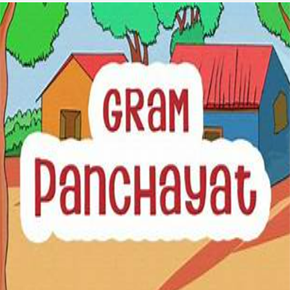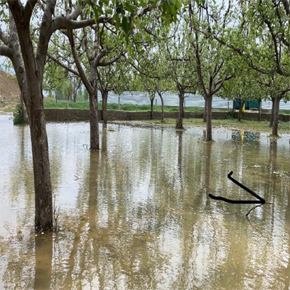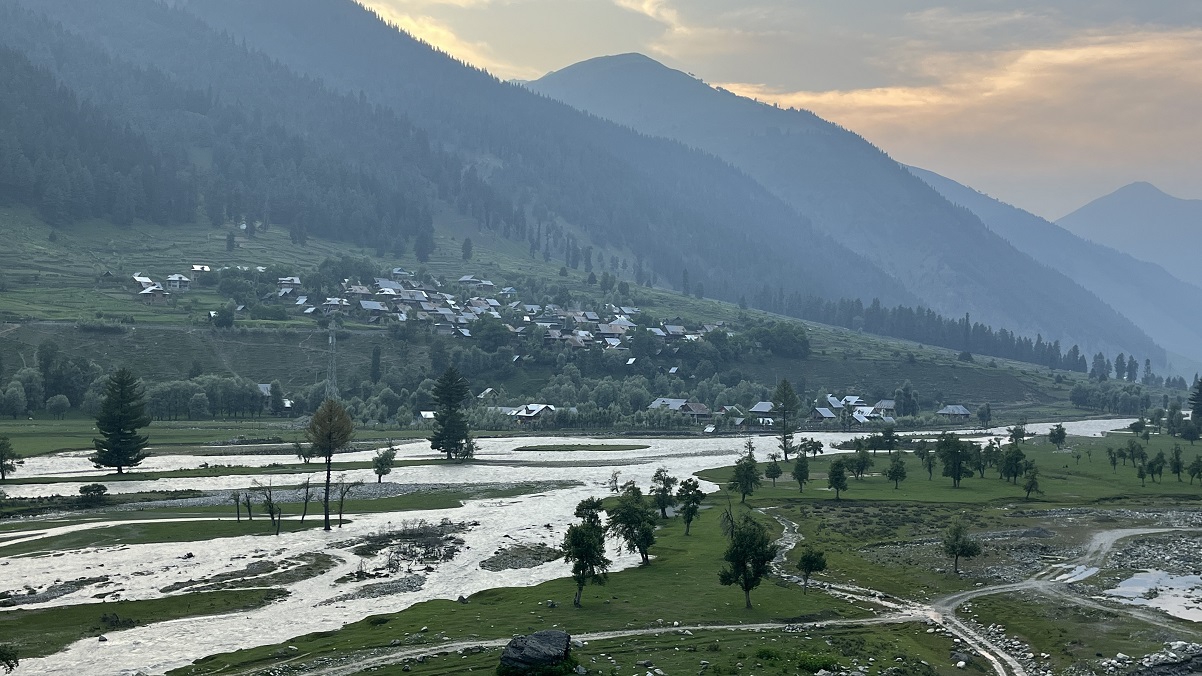Nourishing soils of Kashmir’s karewas crumble under infrastructure.
- Karewas are ancient tablelands of the Kashmir Valley. Their soft soils are key to the region’s agricultural prowess in saffron, apples and almonds.
- Rich in fossils, karewas also hold clues to studying past environments.
- The karewas are imperilled by rapid urbanisation and illegal extractive land uses.
- Karewa soils now line the base of highways or railway tracks and karewa sites are being converted to commercial residential areas.
In the vast saffron-growing land of Pampore, a national highway (NH44) cuts through the middle. Ishfaq Ahmad, a saffron grower, is pondering the future of this land. His eyes are glued to the green twigs coming out of saffron beds. He misses the festive charm that once was a common sight in these vast karewa tablelands.
The soft soils of the karewas sustain Kashmir Valley’s agriculture – Kashmir’s iconic saffron, apples and almonds. These ancient plateaus are also home to fossils of megabeasts and plants that thrived in the region and are clues to Earth’s past. But these ancient formations are now caught in the throes of rapid urbanisation, unplanned development and extractive land use.
Formed around four million years ago, karewas (or wudur), as Indian paleontologist/paleobotanist Birbal Sahni described it in a 1936 article, are “more or less flat terraces or tablelands which cover a great part of the Kashmir Valley, especially on the left bank of the Jhelum.”
Karewas are alluvial deposits of different soil and sediments such as sand, clay, silt, shale, mud, lignite and loess. Geologist Godwin-Austen first used the term karewas in the year 1859. The karewas of Kashmir occupy nearly an area of 2500 square kilometres, spread across the Valley.
“Karewas are soft sediments. Normally, they consist of clay and sand. However, some beds may also contain boulders, prints of volcanic ash and coal in some places. The rest of the lithology of Kashmir consists of hard rocks and are identifiable to the naked eye,” says scientist Rayees Ahmad Shah on the difference between karewas and typical mountain ranges of the Valley. Shah works on processes and mechanisms that shape landscapes and geohazards in mountain environments.
Karewas for livelihood
“Karewas also have a significant importance in the economy of the Valley,” says Sringar-based activist Raja Muzaffar Bhat. Born and brought up in Budgam, Bhat calls karewas his “second home.”
“This land, dotted with almond and walnut trees, makes up 80% of the Budgam district,” Muzaffar says while looking at an almond orchard. “With these patches of land getting depleted, cultivation of cash crops such as saffron in the Valley has been affected,” Bhat says.
According to Shah, the upper layer, or the Dilpur formation of karewas is very fertile. It consists of loess sediments, largely composed of silt-sized grains and are highly porous. The softness of this soil makes it ideal for agricultural activities. “The saffron corm remains dormant for many months. For that period of time, it needs a limited amount of moisture. So, the moisture-retaining quality of this formation makes it ideal for saffron farming,” says Shah.
Shah looks at karewas from a different perspective. “For me, karewas are like open books. They came up millions of years ago. They are an asset to the scientific community as they contain data of millions of years.” The karewas beds can help study the climatic condition of the period they were formed. Moreover, the faults and folds of karewas are important to know about the tectonic activities that happened in the Valley. “Karewas are our geological treasures that need to be studied properly.”
Shah laments the lack of public knowledge on karewas. “Hardly one percent of the population of the Valley knows about them and their importance. There are very few studies about karewas.”
For the locals of Pampore area of Kashmir, karewas are a livelihood asset. In the chilly autumn mornings, farmers of this area go to their karewa fields to plough the land and prepare it for saffron cultivation. However, according to farmer Ishfaq Ahmad, saffron farming has seen a drastic downfall, with land use change as one of the reasons.
“The conversion of karewas into residential spaces has very much affected our saffron growing capacity,” he says. Bhat adds, “If we continue to lose karewas, it will have a major impact on our economy.”
Threats to karewas
From 2015 to 2016, Shah visited karewas in Nagbal area of Ganderbal district. After preliminary research, it was found that the site contained data that was studied to determine the climate of the last 65,000 years of the Valley.
But “nobody can go to that site again or even see it” because of ‘illegal’ mining, Shah says.
Bhat also corroborates illegal and unregulated mining as one of the major threats to the karewas. “Earlier, the soft soil was used by local potters to make different types of pottery. However, after the induction of demolition machinery by illegal miners, the once-marvelous looking karewas look bombarded now,” laments Bhat.
“From construction to filling of lowlands or setting the base of highways, karewas are being mined tirelessly without keeping in view their importance,” he adds.
Queries sent to the District Collector’s Office, Budgam, regarding the mining of karewas remain unanswered at the time of publishing.
As mining is the major threat to karewas and most of the material of karewas is used for construction of highways, including the under-construction Semi Ring Road, the government should look for alternatives,” suggests Bhat. “Instead of karewa soil, they can use the silt from various flood channels. This will also increase their flow capacity.

























































































